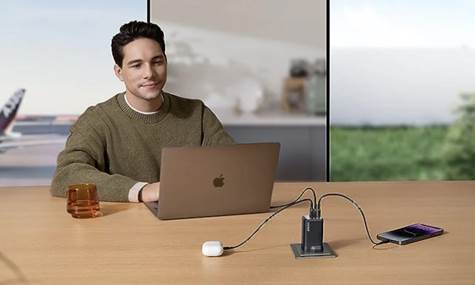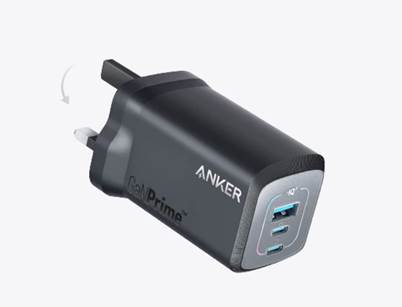A
dead laptop battery can disrupt work, entertainment, and even urgent tasks.
Whether you rely on your device for remote meetings, streaming, or simple web
browsing, a sudden charging failure is frustrating. The issue could stem from a
faulty power outlet, damaged macbook charger,
software glitches, or even an aging battery. Fortunately, most charging
problems have simple fixes you can try at home before seeking professional
help. In this article, we’ll walk you through step-by-step solutions to
diagnose and resolve laptop charging issues, ensuring you regain power quickly
and safely.

1. Basic Checks First
Verify Power Outlet Functionality
Before
assuming the worst, check whether the power outlet itself is working. Plug in
another device—like a phone charger or lamp—to confirm the outlet delivers
power. If the second device doesn’t turn on, try a different outlet or reset
the circuit breaker if necessary. Some surge protectors also have reset buttons
that may have been triggered. If the
outlet works but your laptop still won’t charge, the issue likely lies with the
charger, cable, or laptop hardware. This simple test eliminates one potential
cause and saves time before moving to more complex troubleshooting steps.
Inspect Charger/Cable for Damage
Frayed
wires, bent connectors, or loose plugs can prevent proper charging. Examine the
entire length of the charger cable, especially near the ends where damage often
occurs. If you notice exposed wiring, kinks, or a loose connection, the charger
may need replacement. Additionally, check the adapter brick for overheating or
unusual smells—these are signs of internal failure. A damaged charger not only
fails to power your laptop but can also pose a safety risk. If possible, test
with a spare charger to confirm whether the issue lies with the power
supply.
Try Different Power Sources
Sometimes,
the problem isn’t the charger but the power source itself. If you’ve been using
a power strip or extension cord, plug the charger directly into a wall outlet
instead. Some power strips degrade over time and may not deliver consistent
voltage. Similarly, if you’re using a
USB-C charger, try a different port or power adapter. Laptops with USB-C
charging can be picky about power delivery standards, and a low-wattage adapter
(like one meant for phones) may not provide enough energy. Switching to a higher-wattage
charger often resolves the issue.

2. Battery & Power Management
Software
glitches can trick your laptop into thinking it’s not charging. For Windows
users, a simple battery reset might help: shut down the laptop, unplug the
charger, then hold the power button for 15-20 seconds to drain residual power.
Reconnect the charger and turn the device back on. Mac users can reset the
System Management Controller (SMC) by shutting down, plugging in the MagSafe or
USB-C charger, then pressing Shift+Control+Option + Power button simultaneously
for 10 seconds. Chromebooks have a similar battery reset function—hold Refresh
+ Power for 5 seconds. These steps often resolve false charging errors caused
by temporary system bugs.
3. Software Solutions
Outdated
or corrupted drivers can interfere with charging. On Windows, open Device
Manager, expand "Batteries," right-click each entry, and select
"Update driver." For Macs, check for macOS updates in System
Settings. Chromebooks update automatically, but you can manually check in
Settings. Operating system bugs sometimes affect power management. Installing
the latest updates ensures compatibility with newer chargers and fixes known
battery-related issues. If the problem started after a recent update, check
manufacturer forums for reported charging bugs and possible patches.
4. Hardware Inspection
Test with a Known-Good Charger
If
your laptop still refuses to charge, borrow a compatible charger (same voltage
and connector type) to test whether the issue lies with your original charger.
Many coffee shops, libraries, or workplaces have spare chargers you can borrow
briefly for testing. If the laptop charges with a different charger, yours
likely needs replacement. Avoid cheap knockoff chargers—they may not deliver
stable power and can damage your battery over time.
Check for Swollen Battery
A
swollen battery is a serious hazard and a common cause of charging failure. If
your laptop’s trackpad feels raised, the keyboard bulges, or the bottom case
doesn’t sit flat, the battery may be expanding. Power off the device
immediately and unplug it—swollen batteries can leak or catch fire. Most modern
laptops have sealed batteries, so replacement requires professional help.
Continuing to use a swollen battery risks damaging the laptop or causing
injury. If you suspect this issue, contact the manufacturer or a certified
repair shop.
5. Advanced Troubleshooting
Lint,
dust, or bent pins inside the charging port can prevent a secure connection.
Power off the laptop and use a flashlight to inspect the port. If you see
debris, gently clean it with a toothpick or compressed air—never use metal
tools that could cause a short circuit. For USB-C ports, ensure the connector
clicks firmly into place. A loose connection might indicate internal damage,
which requires professional repair. If the port feels wobbly or doesn’t retain
the charger, it may need replacement.
6. When to Seek Professional Help
If
none of the above steps work, the problem could involve the motherboard,
charging circuit, or a deeply discharged battery. Persistent charging failures
despite trying different chargers and software fixes suggest internal hardware
damage. Professional repair is also necessary if you lack technical
expertise—opening a laptop improperly can void warranties or cause further
damage. Authorized service centers can run diagnostics and replace faulty
components safely.
Conclusion
A
non-charging laptop doesn’t always mean expensive repairs. Often, the fix is as
simple as swapping chargers, resetting the battery, or cleaning the charging
port. Even if your Mac won’t power on, don’t panic—sometimes, the issue is just
a faulty MacBook charger, which is easy to replace. By methodically testing
each potential cause, you can identify and resolve most charging problems at
home. However, if hardware damage is suspected, seeking professional assistance
ensures your laptop stays safe and functional for years to come.



